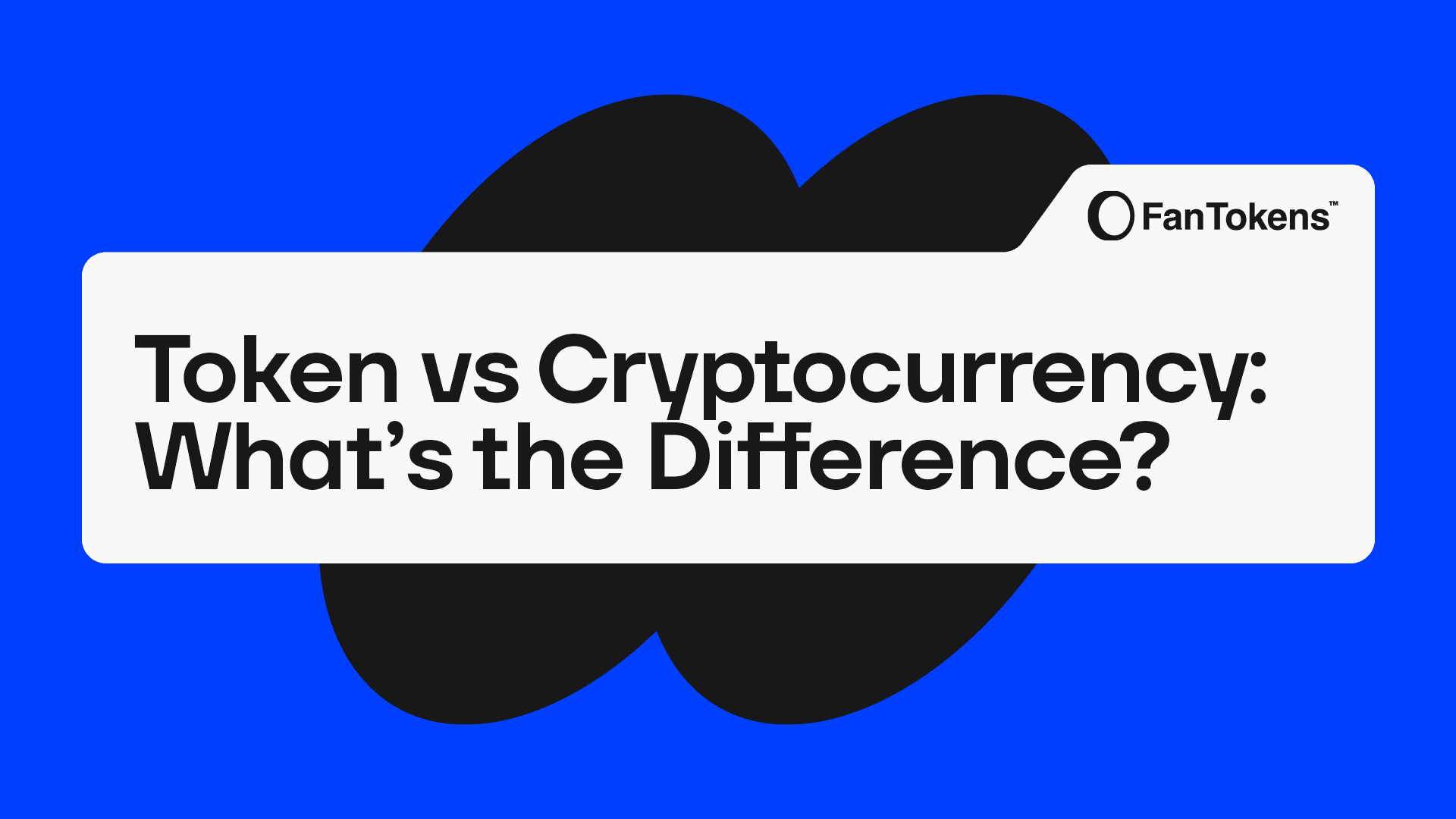Token vs Cryptocurrency: What’s the Difference?

In recent times, the term token and cryptocurrency have been used interchangeably as if they mean the same thing. But the fact is that they function differently despite the significant roles they play in the crypto space.
Knowing the disparities between these two important terms in crypto will aid crypto enthusiasts in making the right choices when it comes to trading, investing or building in the blockchain space.
Token vs Coin – The Basics
A token is a digital asset that functions on an existing blockchain. It has no network of its own. Also, tokens can work like points, tools or tickets that enable access to services, features or communities.
A coin is a digital currency that runs on its own blockchain. Examples include Bitcoin and Ethereum. You can think of coins as the fuel that keeps their own blockchain network running.
What Makes a Cryptocurrency?
A cryptocurrency is a form of digital currency that resides solely within the confines of a blockchain network. Each cryptocurrency has its own independent infrastructure, guidelines, and accounting system. For instance, Bitcoin is transacted on the Bitcoin blockchain, Ether is utilized on the Ethereum blockchain, and Chiliz powers the Chiliz chain. These networks are designed to support and manage their own coins without relying on other blockchains.
A cryptocurrency serves as a currency to transact on its network. Each time you send Bitcoin, transfer Ether, or make a Chiliz transfer, you incur a minuscule fee, which is paid in that particular cryptocurrency. These fees are not a mere burden to the user, as in the case of Bitcoin, Ether, and Chiliz; they act as motivators to miners or validators who help in the processing and securing of transactions.
Every cryptocurrency serves as the much-needed fuel for their blockchains. They energize the system by compensating those who validate transactions, forge new blocks, and assure the system’s security. Without such incentives, it would be very difficult to motivate individuals to allocate computing resources. To summarize, cryptocurrencies are vital for the functionality, security, and blockchain activity.
What Is a Token on a Blockchain?
A token is a type of digital asset that is built on top of an existing blockchain instead of having its own. Tokens are created using smart contracts, which are programs that run on blockchains like Ethereum, BNB Chain, or Polygon. Because they use another blockchain’s network, tokens do not need their own separate infrastructure to work.
Tokens can have many different purposes. Some give access to certain features in a project. Others act as a form of payment inside a platform. Many are used for governance, meaning holders can vote on project decisions. For example, Fan Tokens let sports fans take part in team polls or get special rewards.
In simple terms, if a cryptocurrency is the fuel that powers a blockchain, a token is more like a ticket or tool that works within that system for specific tasks.
Key Differences at a Glance
Here is a simple side-by-side look at how tokens and cryptocurrencies differ:
| Feature | Cryptocurrency | Token |
| Origin | Has its own blockchain | Built on an existing blockchain |
| Examples | Bitcoin, Ethereum, Chiliz | USDT, UNI, Fan Tokens |
| Purpose | Powers and secures the blockchain | Serves specific functions in a project or platform |
| Creation | Created through the blockchain’s native process like mining or staking | Created through smart contracts |
| Main Use | Paying fees, rewarding validators, running the network | Access, utility, governance, or platform payments |
Why This Matters for Web3 Users
Understanding the difference between tokens and cryptocurrencies is a key skill for anyone navigating Web3.
Having this understanding enables you to choose the right wallets that support your assets, execute transactions through the correct networks, and protect against potential losses. It also makes staking simpler since you can readily identify platforms that support your asset as well as the potential rewards.
The same logic applies to purchasing Fan Tokens and other digital assets. This knowledge ensures you can track their location, storage, and interactions with the blockchain. Such knowledge enhances investment safety, and the ability to navigate with confidence enhances every transaction in the Web3 realm.
Final Thoughts: Learning the Language of Blockchain
Coins and tokens are vital to the crypto ecosystem. Coins and tokens are vital to the crypto ecosystem, and that coins power their own blockchain while tokens provide additional utility and functionalities to the blockchains.
Having this understanding enables smarter decisions in purchasing, storing, and using digital assets. With latest developments in Web3, this understanding presents boundless opportunities.